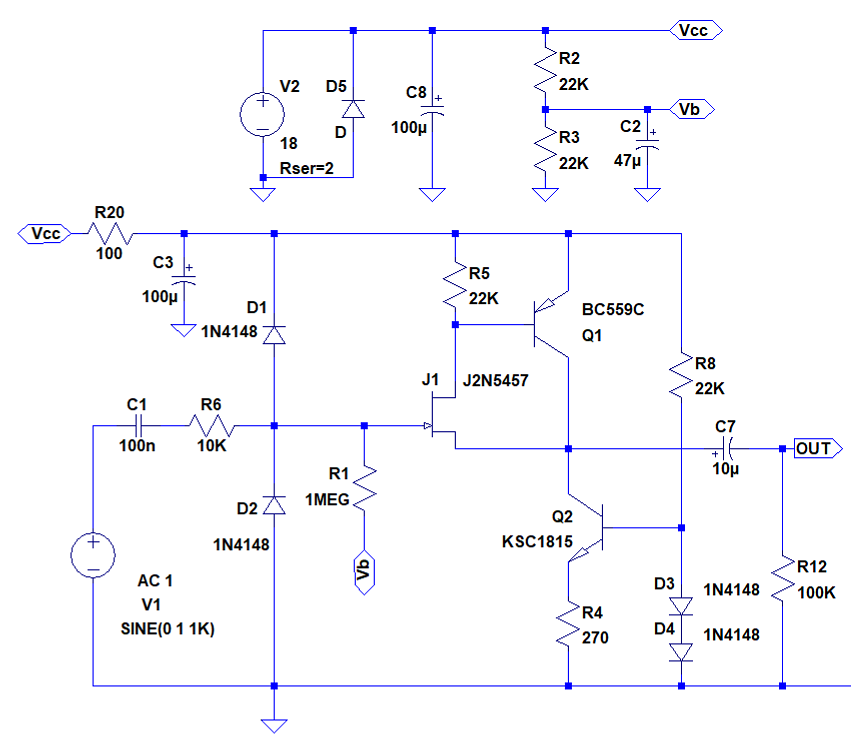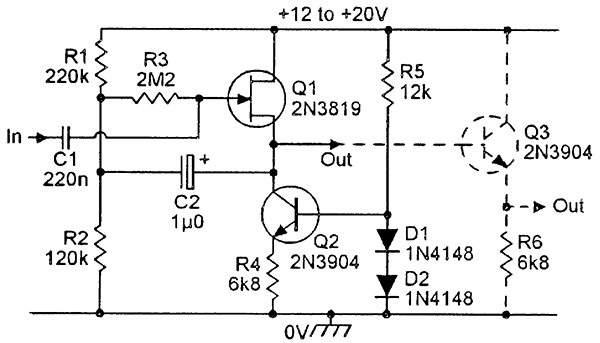Hello!!
Could anyone kindly check my “design by Google” preamp for acoustic guitar? I used Igor's Preamplifier's universal input board as the inspiration for the input stage as it looked ideal for the application. Igors input stage thread is here…
https://groupdiy.com/index.php?topic=31611.0
I changed the fet/transistors to those I have in my drawer (and TO92 components are pretty much disappearing, so would like to use what I have), and I plan to run the thing from an 18V battery of AA cells. I made some changes that I thought would be appropriate (in particular R4 which is R21 in Igors original design) to suit battery operation. The output will feed into an amplification stage with an input of around 3 to 5K ohm impedance
Here is Igors original design…

And here is my proposal.

It seems to sim up alright using LTSpice but could someone with a full understanding of this type of circuit let me know if I need to make any changes in resistor values/biasing to get the best performance out of the buffer stage in real life use?
Any helpers..!?
Thanks
Ray
Could anyone kindly check my “design by Google” preamp for acoustic guitar? I used Igor's Preamplifier's universal input board as the inspiration for the input stage as it looked ideal for the application. Igors input stage thread is here…
https://groupdiy.com/index.php?topic=31611.0
I changed the fet/transistors to those I have in my drawer (and TO92 components are pretty much disappearing, so would like to use what I have), and I plan to run the thing from an 18V battery of AA cells. I made some changes that I thought would be appropriate (in particular R4 which is R21 in Igors original design) to suit battery operation. The output will feed into an amplification stage with an input of around 3 to 5K ohm impedance
Here is Igors original design…

And here is my proposal.

It seems to sim up alright using LTSpice but could someone with a full understanding of this type of circuit let me know if I need to make any changes in resistor values/biasing to get the best performance out of the buffer stage in real life use?
Any helpers..!?
Thanks
Ray







